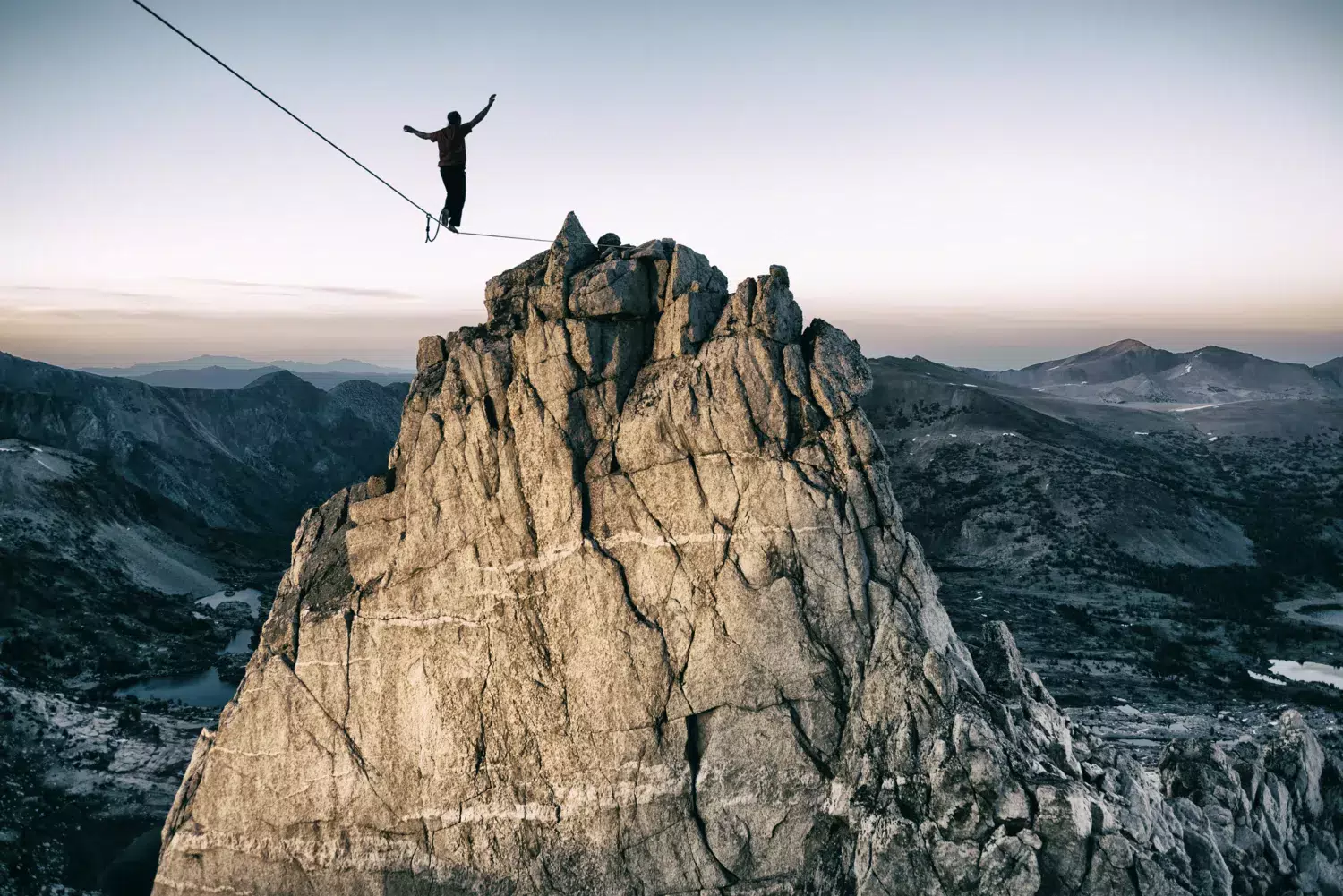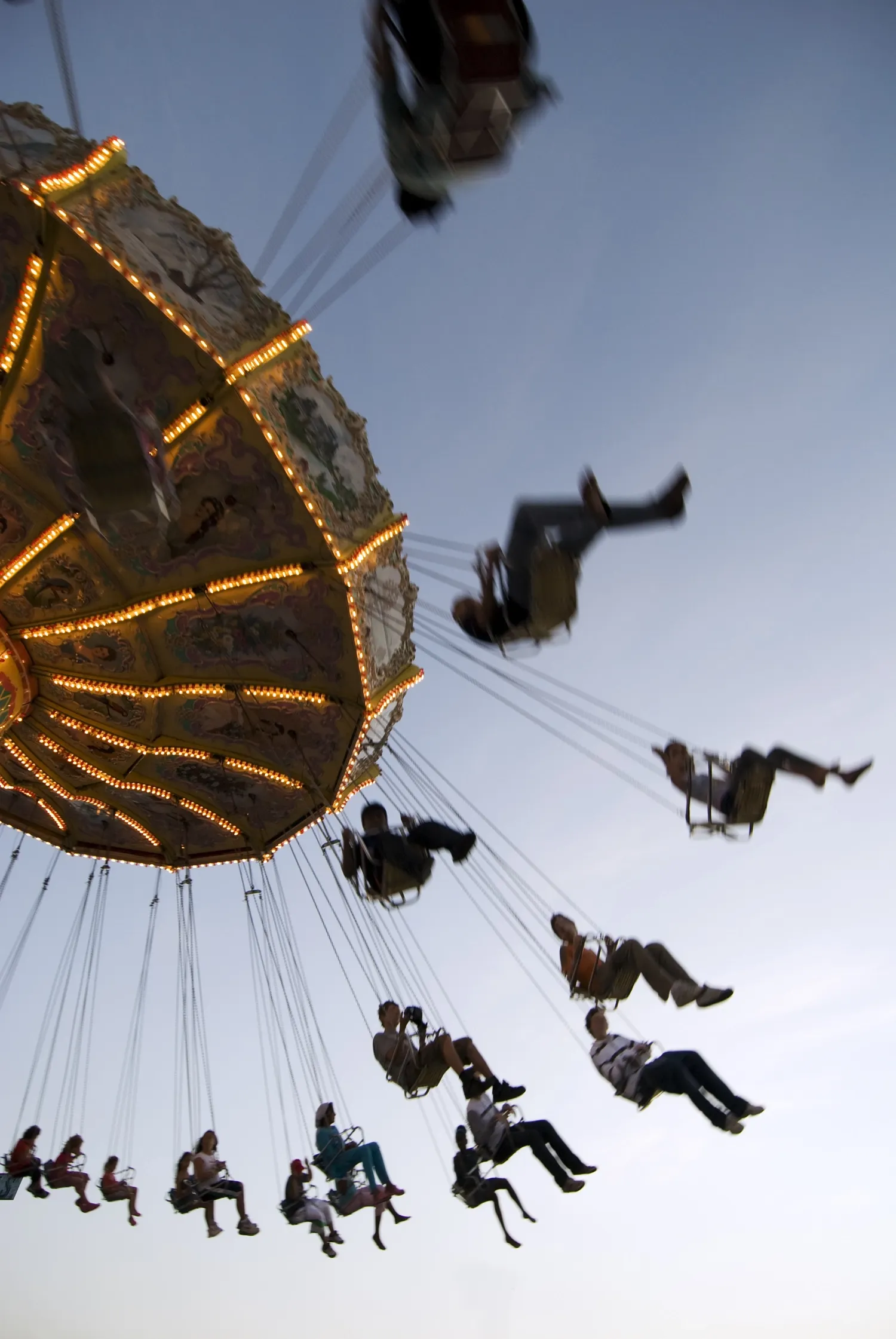Challenge the sway – curious about balance

To maintain balance, several factors must align. The inner ears and eyes need to send accurate signals to the brain. Good motor skills and sense of touch, especially in the feet, along with a healthy brain, are necessary. It is not surprising that balance disorders can occur, but how should they be treated?
Text: Maja Lundbäck for Medicinsk Vetenskap nr 2, 2024.
The human foot sole is quite small - yet the surface provides adequate support for balance, at least while we are young and our muscles and joints function well. The fact that our bodies lean slightly forward with each step is not a problem either, as long as we are healthy. We do not fall to the ground because of it.
The sense of balance is defined as the ability to keep ourselves upright in relation to gravity or gravitational force. But do we truly have a sense of balance, or is it more complicated?
A collaboration between senses
Tatjana Tomanovic, affiliated researcher at the Department of Clinical Science, Intervention and Technology at Karolinska Institutet, responds with a nuanced perspective:

“Well it is more of a system to me, where multiple senses and organs collaborate. The brain plays a crucial role in this balance system, integrating signals from the eyes, ears, touch, joints, and muscles”.
When our senses and organs fail to cooperate, it suddenly becomes evident that the balance system is disrupted. We might feel dizzy or struggle with cognitive tasks while walking.
The so-called balance organ in the inner ear, also known as the 'vestibular system, continuously sends signals to the brain about our body’s position relative to the surroundings.
The vestibular system can detect Earth's gravity and how we move in relation to it. One part of the vestibular system consists of semicircular canals which are sensitive to head acceleration. Other parts, named otolith organs, are sensitive to gravitation and head tilt. For this function the system uses the distribution and pressure of small stones (otholits) on hair cells to send signals to the brain and muscles.
“When we tilt our heads, tiny crystals within the inner ear shift, stimulating hair cells. These hair cells send signals to the brain, providing information about head tilt and orientation”, Tobias Wibble, a physician and postdoctoral researcher at the Department of Clinical Neuroscience at Karolinska Institutet explains.
Now, why do we sometimes feel dizzy on bumpy roads or amusement park rides? According to Tobias Wibble, this can be explained by a mismatch between inner ear signals and visual cues. When the signals from the inner ear do not align with what our eyes perceive, dizziness or disorientation might occur.
"Our senses need to speak the same language, otherwise we become dizzy and experience motion sickness," he explains.
The balance needs to be challenged
However, once motion sickness and nausea have disappeared, we no longer think about our balance function. That's how it is with our sense of balance, as long as everything is in order we do not notice it.

To develop balance beyond the norm, such as learning to walk on a tightrope, motor practice is still necessary. But what we might not consider is that even everyday balance requires physical training.
“Children constantly train their balance through play. They experiment, push their limits, and sometimes fall ‒ and that is beneficial because that is how balance develops," says Erika Franzén, Professor at the Department of Neurobiology, Care Sciences and Society at Karolinska Institutet.
The importance of challenging our balance becomes evident after injuries, illnesses affecting motor skills or as we grow older. Some people who experience declining balance, perhaps due to worn-out knee joints or weak muscles, become overly cautious. However, since balance is a perishable skill, passivity is entirely the wrong approach.
“As soon as we start limiting ourselves and moving less, our balance deteriorates. Eventually we become unsteady - and that is when we must focus on maintaining balance, by actively thinking about it," says Erika Franzén.
Crystal sickness is a common balance disorder
Having excellent motor skills is beneficial, but it does not protect against all balance disturbances. One thing that can happen is that tiny stones in the inner ear become dislodged and spread from the otolith sac to the semicircular canals, where they are perceived as foreign. This condition is called crystal sickness, or benign paroxysmal positional vertigo (BPPV)-and is a harmless condition that causes dizziness when you change head position.
“If the stones end up in the wrong place, the body may misinterpret gravitational signals. Every time you lie down or change position, dizziness occurs," says Tatjana Tomanovic.
To confirm the diagnosis, in addition to dizziness during positional changes, specific eye movements are also assessed. Crystal sickness is relatively common - and the older you get, the more prevalent it becomes.
- "A Swedish study indicates that one in ten individuals over the age of 75 experiences this," says Tatjana Tomanovic.
The severity of the condition varies among individuals. Some recover naturally from dizziness, while others benefit from tips on head movements to reposition the crystals. It is also said that misplaced crystals often dissolve within two to three weeks, regardless of treatment, although this is not always the case, according to Tatjana Tomanovic. She specialises in assisting the most challenging cases BPPV.
“By placing the patients in a chair that can rotate 360 degrees, I can more easily examine them. It is also easier for the patients to assume different positions, allowing me to move the crystals from the semicircular canals to the otolith sac," she explains.
This treatment is nearly always effective.
“Often, two rounds of treatment ten minutes apart will suffice. However, some individuals may require additional sessions.
Occasionally, Tatjana Tomanovic does not find any loose crystals in patients. In such cases, it is not crystal sickness but another cause of dizziness. Sometimes, it is related to functional dizziness, also known as phobic vertigo.
- "If you experience crystal sickness repeatedly, you can get scared and develop a kind of phobia with anxiety," she explains.

Dizziness often lacks clear explanation
Dizziness can also be a symptom of psychological conditions, such as panic anxiety, prolonged stress, or exhaustion and depression.
If, after examinations, the inner ear is found to be healthy, healthcare professionals are somewhat at a loss, according to Tobias Wibble. In many cases of dizziness or impaired balance, it is challenging to pinpoint a single organ as the culprit. Approximately half of all patients who arrive at the emergency department with dizziness receive no clear explanation for their symptoms. Some of these patients eventually undergo evaluation by Tobias Wibble.
“I often see patients with persistent dizziness or unsteadiness, who have visited many doctors without receiving a satisfactory answer. I would like to provide them with an explanatory model for why they feel the way they do," he says.
He believes it is possible to explain additional conditions related to dizziness by also examining the patients' vision more closely.
A group of patients who experience dizziness, even though they have not been on a bumpy road or ridden a carrousel, are individuals who have suffered head trauma and concussions.
“Some of them develop long-lasting difficulties in busy environments, known as 'supermarket syndrome'. Some cannot socialise and become quite isolated," he explains.
When some of these patients with persistent dizziness eventually receive psychiatric diagnoses, it is not necessarily wrong. Prolonged dizziness can take a toll on one’s mental well-being.
The role of vision is being explored
But what is the real explanation for the persistent spinning sensation? When Tobias Wibble investigated this patient group, he discovered that their eye movements were more sensitive to motion within their visual field.

“We observed faster eye movements, suggesting that somewhere in the brainstem, motion information is processed more intensely," he says.
His hypothesis now revolves around the idea that the brainstem in these dizzy patients receive visual input without proper filtering.
"Normally, humans have a kind of braking system for eye movements. Our hypothesis is that the brake is damaged, allowing visual motion information to flow into the brainstem unchecked, resulting in heightened sensitivity to movement," he says.
Today, the patient group can already receive help through sensory therapy, which involves controlled exposure to various types of motion. Now, Tobias Wibble also hopes for another experimental method called galvanic vestibular stimulation (GVS). In GVS, weak electrical currents are applied to the vestibular system via electrodes placed behind the ear.
“GVS generates nonsense signals. The brain does not fully understand what is going on, but in other conditions, these signals have been observed to contribute to brain plasticity, making patients more receptive to rehabilitation. However, this has not yet been evaluated specifically for visual dizziness," he explains.
As if the correct input from vision and the inner ear were not enough ‒ for the brain to know where body parts are in relation to space, touch is also crucial If sensory nerves are damaged, such as in peripheral neuropathy (commonly affecting the soles of the feet), the brain receives less accurate feedback. Peripheral neuropathy can eventually affect individuals with diabetes.
The brain must also have the ability to sort and process the nerve signals sent by sensory organs.
“Many neurological conditions involve difficulties in brain processing - you receive information but cannot handle it. This can be seen in Parkinson's disease, for instance," explains Erika Franzén.
In Parkinson's disease, there are challenges in processing nerve signals within the basal ganglia.
“Motor commands from the brain are somewhat restricted. The feeling is that you are taking steps of the same size as usual, even though you are not. This affects your balance and makes you less stable. Additionally, because balance reactions take longer, you may not always recover in time if you stumble," says Erika Franzén.
She emphasises that cognition (thought processes) also plays a role in balance ability.
- If we don't pay enough attention to our walking and instead look down at our mobile phones or think about other things, we become less aware of obstacles. This becomes more apparent in older individuals or those with neurological conditions," she says.
Balance training must be personalized
Erika Franzén has developed a group training programme for Parkinson's disease, focusing on coordination, balance reactions and sensory- cognitive processes.
“We design the training around obstacle courses. Participants walk on different surfaces to challenge various sensory inputs. They carry a ball that obstructs their vision and engage in ball tossing to divert focus from balance
As the programme progresses, the tasks become more challenging.
"One way to increase difficulty is by adding cognitive and motor tasks, requiring participants to multitask ‒ just as life demands," she concludes.
Several of her studies have shown positive results in walking, balance, and the ability to multitask.. However, in the latest study involving people with mild Parkinson's disease, no significant group differences were observed between those who received balance training and those who did not.
"Of course, it is a bit frustrating," she says. "But what we have noticed is that some people improve with the training, while others do not. - highlighting the need for more personalised training. Training is not a one-size fits-all solution," she adds.
Currently, she is adapting the program to also benefit for people with multiple sclerosis.
"In our training, we aim to challenge their balance in realistic environments, finding exercises where they can test their balance under controlled conditions. Sometimes it is also about building self-confidence," she says.
While there is a risk of falling, sometimes you have to take that risk.
"Being realistically cautious about falling is essential" she concludes.
Three tips to improve your balance
Challenge yourself. Get out and move around, walk on different surfaces, for example in the forest where you have to lift your feet. Train your brain while walking - recite what you had for lunch last week, do a math exercise or discuss with a friend - engage your mind.
Use your sense of touch. Touch provides additional reference points for balance. Try pinching your earlobe, placing your hands on your waist or holding onto an external object to enhance your balance.
Trust your autopilot. The balance system fundamentally operates automatically. Some patients may feel increased instability when consciously focusing on their body's balance signals, leading to a constant need to adjust posture and avoid losing balance.
Source: Erika Franzén, Yrselcenter.se
